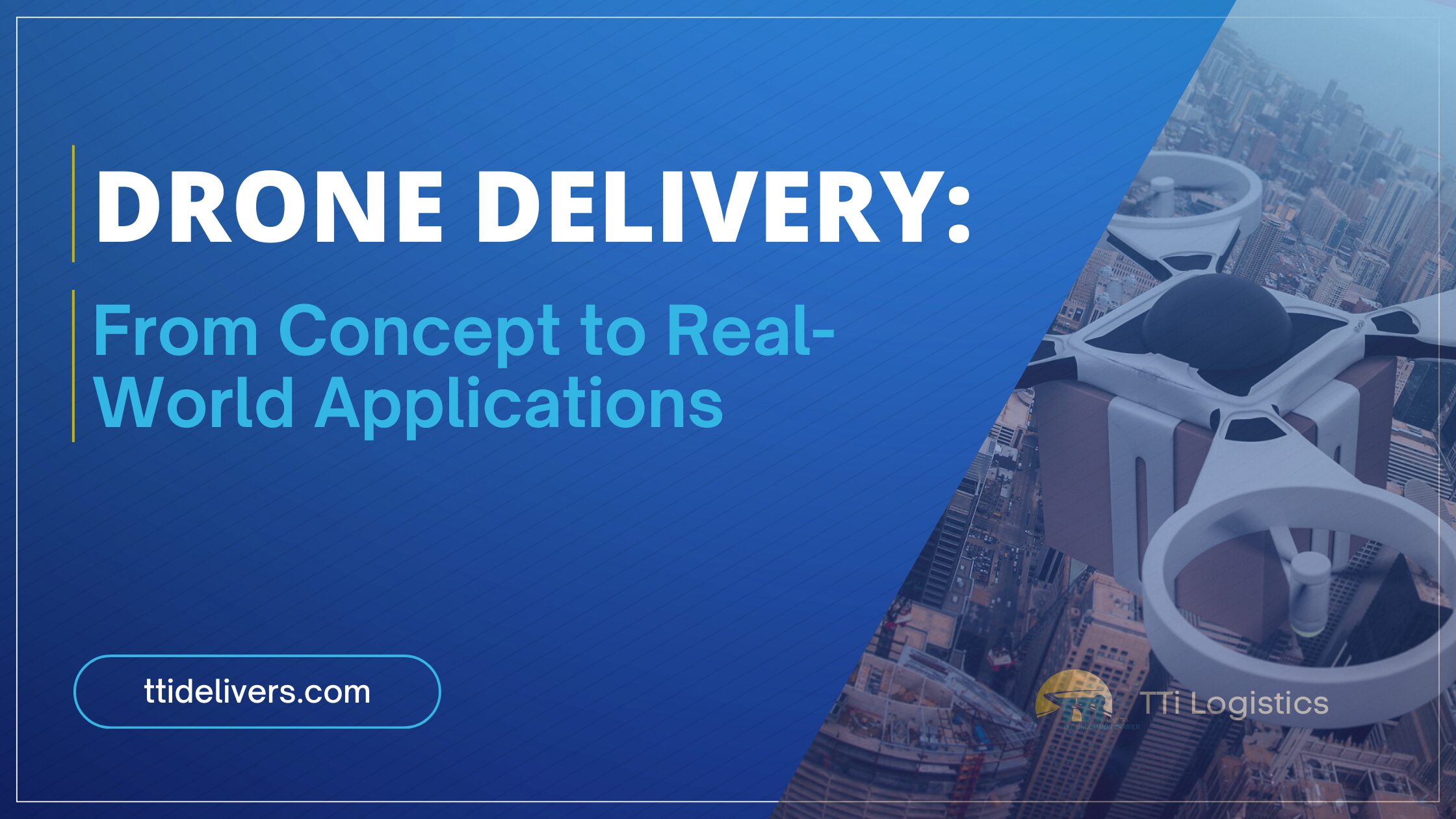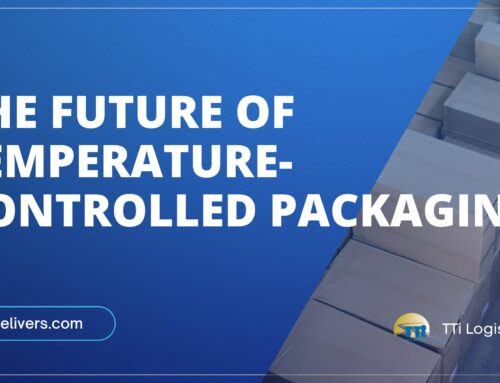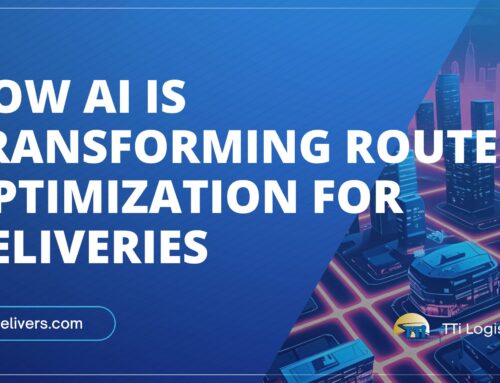The Rise of Drone Delivery in Logistics
The logistics industry has always been at the forefront of innovation, and drone delivery is emerging as one of the most transformative technologies in recent years. What once seemed like a futuristic concept is now becoming a viable solution for businesses looking to enhance efficiency and speed in their supply chains. Companies worldwide are exploring drone delivery applications to optimize last-mile logistics, reduce costs, and provide faster service. This blog explores the journey of drone delivery applications from concept to real-world implementation and its impact on the logistics industry.
The Evolution of Drone Delivery
Drone technology has come a long way since its initial conception. Originally developed for military and surveillance purposes, drones have found applications in various industries, including photography, agriculture, and healthcare. The logistics sector quickly recognized their potential, leading to extensive research and development to integrate drones into commercial delivery services.
Early Experiments and Challenges
Major companies like Amazon, UPS, and DHL spearheaded early experiments in drone delivery applications. Amazon’s Prime Air project, for instance, demonstrated how drones could autonomously transport small packages over short distances. However, regulatory hurdles, air traffic concerns, and technological limitations initially slowed down widespread adoption.
Despite these challenges, advancements in artificial intelligence (AI), battery technology, and autonomous navigation have significantly improved the feasibility of drone delivery applications. Companies are now testing drones for various use cases, from delivering medical supplies to remote locations to enhancing e-commerce deliveries in urban areas.
Key Drone Delivery Applications in Logistics
1. Medical and Emergency Supply Deliveries
One of the most impactful drone delivery applications is in the healthcare sector. Drones have been used to transport life-saving medical supplies, including blood, vaccines, and medications, to remote and underserved regions. Organizations like Zipline have successfully implemented drone delivery applications in Africa, ensuring rapid access to essential healthcare products.
Drones are also proving crucial in disaster relief efforts, delivering emergency supplies to areas affected by natural disasters where traditional transportation methods are compromised.
2. E-Commerce and Retail Deliveries
Retail giants like Walmart and Amazon have been investing in drone delivery applications to optimize last-mile logistics. With consumer expectations for faster deliveries on the rise, drone delivery applications offer a practical solution for reducing delivery times and minimizing carbon footprints.
By using drone delivery applications, retailers can bypass traditional traffic congestion, ensuring faster and more efficient deliveries for lightweight products such as electronics, clothing, and household essentials.
3. Food and Grocery Delivery
The food delivery sector is also exploring drone delivery applications to improve service speed and efficiency. Companies like Wing, a subsidiary of Alphabet, and Uber Eats have conducted pilot programs using drone delivery applications to deliver meals and groceries directly to customers’ doorsteps.
This application is particularly beneficial for rural and suburban areas where traditional delivery services may not be as efficient. It also enhances the sustainability of food delivery by reducing the need for fuel-powered vehicles.
4. Warehouse and Inventory Management
Beyond last-mile deliveries, drone delivery applications are being integrated into warehouse operations. Businesses are utilizing drone delivery applications for inventory management, scanning barcodes, and conducting real-time stock checks. This enhances operational efficiency by reducing the need for manual labor and improving accuracy in inventory tracking.
Drone delivery applications equipped with AI-driven software can navigate warehouses autonomously, identifying misplaced items and streamlining inventory audits.
5. Environmental and Sustainability Initiatives
As companies strive to reduce their carbon footprints, drone delivery applications are being seen as an environmentally friendly alternative to traditional delivery methods. Drone delivery applications run on electric power, significantly reducing greenhouse gas emissions compared to delivery trucks and vans.
By incorporating drone delivery applications, businesses can enhance their sustainability efforts while maintaining high-speed logistics operations.
Overcoming Challenges in Drone Delivery Implementation
While the potential of drone delivery applications is undeniable, several challenges must be addressed before large-scale implementation becomes a reality.
Regulatory Hurdles
Government regulations play a crucial role in shaping the future of drone delivery applications. Authorities such as the Federal Aviation Administration (FAA) in the United States and the European Union Aviation Safety Agency (EASA) are working to establish guidelines for drone delivery applications in commercial airspace.
Current regulations often limit drone delivery applications’ flight distances, weight capacities, and operational hours, making it difficult for businesses to scale drone delivery applications. However, ongoing collaborations between logistics companies and regulatory bodies are paving the way for more flexible policies.
Infrastructure and Technology Limitations
For drone delivery applications to become mainstream, significant advancements in infrastructure and technology are required. This includes the development of dedicated drone delivery applications landing zones, improved battery life for longer flight durations, and enhanced AI-driven navigation systems.
Additionally, ensuring seamless integration with existing logistics networks is critical for optimizing supply chain efficiency through drone delivery applications.
Public Perception and Safety Concerns
Public acceptance of drone delivery applications is another factor influencing its adoption. Concerns regarding privacy, noise pollution, and potential accidents need to be addressed through community engagement and transparent policies.
Companies investing in drone delivery applications must prioritize safety measures, including fail-safe mechanisms, collision avoidance systems, and robust cybersecurity protocols to prevent hacking and interference.
The Future of Drone Delivery Applications in Logistics
The future of drone delivery applications looks promising as technological advancements continue to accelerate. Industry experts predict that within the next decade, drone delivery applications will play a significant role in reshaping global supply chains.
Key developments to watch for include:
- Integration with AI and Machine Learning: AI-powered drone delivery applications will enhance autonomous navigation, optimize flight paths, and improve real-time decision-making capabilities.
- 5G Connectivity: Faster and more reliable communication networks will enable seamless drone delivery applications, allowing for better coordination with logistics hubs.
- Expanded Regulatory Approvals: Governments are gradually adapting policies to accommodate drone delivery applications, with trial programs leading the way for broader commercial implementation.
Companies that proactively invest in drone delivery applications today will be better positioned to leverage its benefits in the competitive logistics landscape of tomorrow.
The Impact and Future of Drone Delivery
Drone delivery applications are no longer a distant dream—they are becoming an integral part of modern logistics. From healthcare and retail to warehouse management and sustainability, drone delivery applications are revolutionizing the way goods are transported.
Despite challenges in regulation, infrastructure, and public perception, the continued innovation in drone delivery applications and collaborative efforts between businesses and policymakers are paving the way for widespread adoption. As logistics companies explore new ways to optimize their supply chains, drone delivery applications are set to become a game-changer in the industry, offering faster, greener, and more efficient transportation solutions.
At TTi Logistics, we stay ahead of industry trends, exploring innovative drone delivery applications that enhance efficiency and reliability. As drone delivery applications continue to evolve, we are committed to integrating cutting-edge advancements into our logistics services to meet the ever-changing demands of our customers. Stay connected with us for the latest developments in drone delivery applications innovation!







